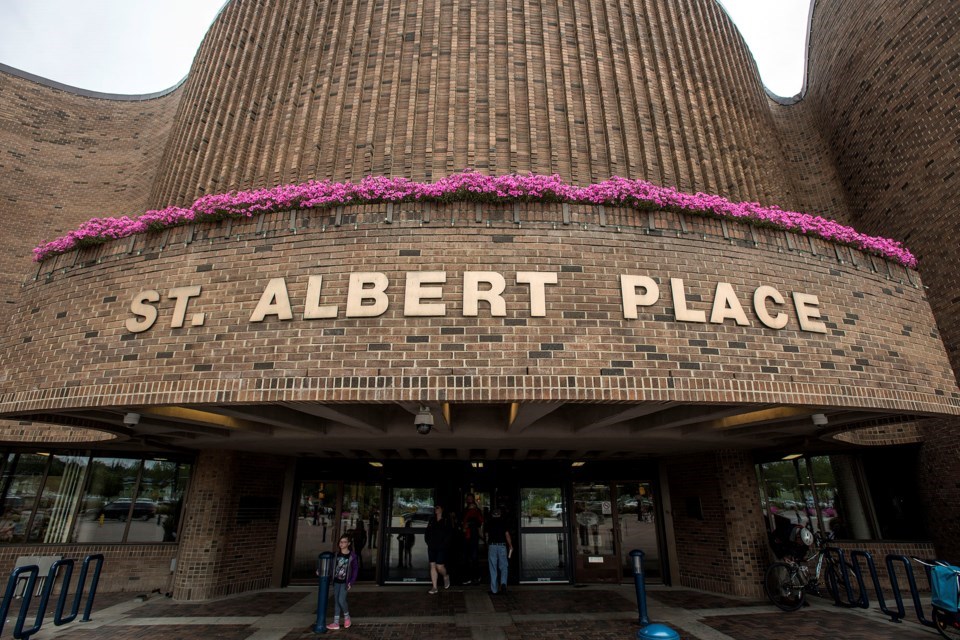St. Albert city council is looking to further postpone the implementation of a new formula for calculating stormwater utility rates for residents and local businesses, citing limited staff capacity and higher city priorities.
The new formula the city is considering is based on a “user pays” philosophy, with properties that affect the stormwater infrastructure system the most paying the most, and ending the current system where residential and small commercial property owners subsidize large property owners.
During the committee meeting, Coun. Wes Brodhead said it was “heart-wrenching” to learn the new formula was going to be further postponed, with a scheduled implementation date of 2028.
“I saw this as a move to sort of bring equity to our utility rate system,” Brodhead said.
“I find it hard in my heart to (keep) a system that small individual ratepayers are subsidizing multi-billion dollar industries, and I don't find in my heart too much sympathy ... whether it goes up $10,000 for them annually.”
“It's not even a rounding error on their annual profit statement.”
Stormwater utility rates are monthly charges built into overall utility bills. Currently, standard detached homes in St. Albert are charged $16.18 per month, multi-family residences are charged $11.08 per month, and industrial and commercial properties are charged $43.09 per month.
The new formula, which city council initially approved in 2019, would end the current flat-rate system and replace it with a formula based on property size and how much any given property contributes to the stormwater system by not having plenty of water-permeable features such as lawns or gardens.
Although the new formula was approved years ago, council heard during the Aug. 22 standing committee of the whole meeting administration had to pause the implementation because of the COVID-19 pandemic, and because other priorities such as long-term planning and debt management were dominating staff time.
Administration initially recommended the committee agree to indefinitely pause the implementation of the new formula; however, the committee passed a motion directing city staff to create a business case for implementing the formula as part of the 2025 city budget, with an ideal implementation date of Jan. 1, 2028.
The proposed new formula ideally would shift some of the stormwater infrastructure cost burden from residential property owners to industrial and commercial property owners, Stephen Graham, a senior business analyst with the city, wrote in a report to council.
“Under the current rate system, a majority of cost recovery (91.3 per cent) is from residential customers,” Graham wrote.
“This leads to the question of whether a flat rate does a good job of accurately and fairly allocating stormwater costs among residents and businesses in the city.”
“Current best practices suggest that the biggest factor contributing to the use of stormwater infrastructure is the amount of impermeable or water-resistant surface on a property.”
Accordingly, each individual property under the new formula would be assessed and charged a unique stormwater utility rate based on property size and property features. The committee heard it could take administration at least two years to complete all assessments and calculations because each property would need to be considered individually.
Graham's report to council noted in 2019 when council approved the new formula it was on the condition that it be phased in over four years to limit substantial rate increases, and that a cap on how much a property's size would play into its monthly rate needed to be determined.
Coun. Natalie Joly said she understood staff capacity is limited, but didn't want to indefinitely cancel the new formula's implementation.
“I want to support policies and utility models that support best practices because of the equity involved — having my grandmother subsidize a billion-dollar company is pretty distasteful — but also encouraging development of surfaces that protect the community in terms of risk of major storm events is really important,” she said.
“Moving towards that kind of development will be really important for my great-grandchildren being here, so that's why I'd like to see this go forward rather than shelving it.”
While water-resistant property features generally refers to standard concrete or pavement, other types of hard surfaces such as cobblestone can be water-permeable.
Coun. Sheena Hughes, speaking against the motion to have administration create a business case for implementing the formula with a scheduled date of 2028, said she thought other members of council were forgetting that not all large property owners in St. Albert are multinational corporations.
“There's going to be serious effects to some people, not all of them are multinational businesses, and regardless of whether we do this now or in 2028, those businesses and larger lots will be affected,” she said.
“We can't just justify it and say that they're all in one sweeping group.”
The committee approved the creation of a business case and new implementation date of Jan. 1, 2028 with only Hughes and Coun. Shelley Biermanski opposed. Coun. Mike Killick was not in attendance at the meeting, and therefore did not vote.
Council will now need to pass the motion again at an upcoming regular council meeting.




